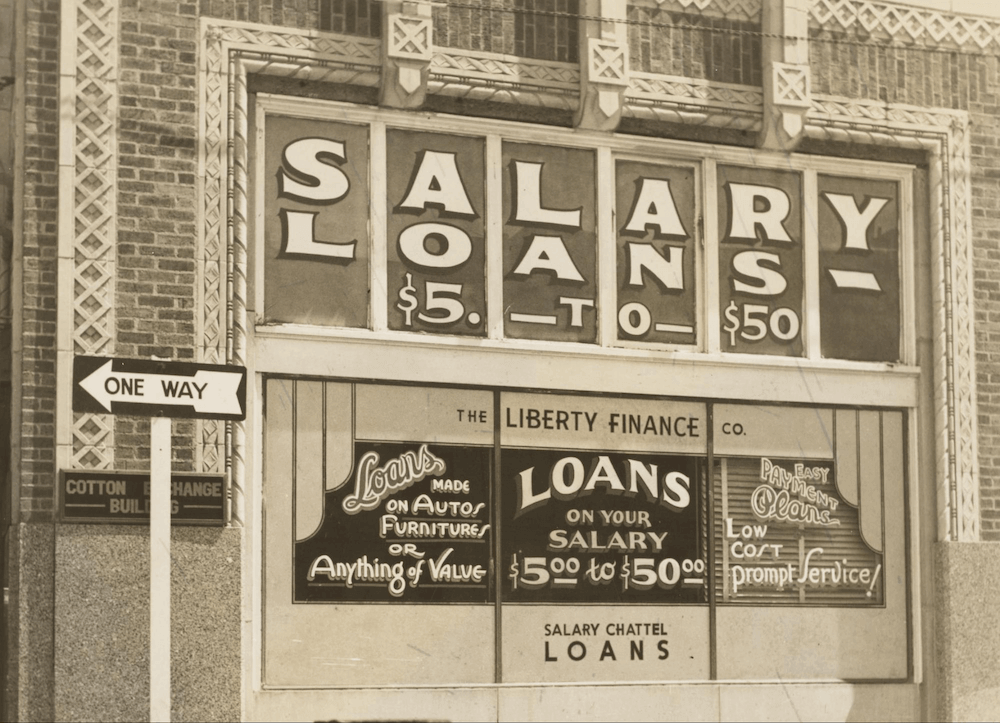What is Credit Risk?
An exploration of credit risk.
 Figure 1: Photo by the New York Public Library on Unsplash
Figure 1: Photo by the New York Public Library on Unsplash
Introduction
In this article we are going to take the general idea that credit risk is:
"…the risk that someone or something does not meet their financial obligations to you."
A common way credit risk arises is when you give your assets to someone else to look after. For instance, keeping your assets with a custodian or keeping your cash in a bank gives rise to credit risk1.
Another common way to take on credit risk is by making a loan or buying a bond. Let’s take an example. If you buy a bond from Issuer Corp, the company promises to make interest payments to you on a predefined schedule (coupon payments), and also promises to repay the outstanding amount of the bond at the pre-agreed maturity date (maturity payment). The simple act of you purchasing the bond exposes you to the credit risk on Issuer Corp, you are taking the risk that they may not pay you the interest and maturity amounts when due.
Basically, if you temporarily lend your assets, or give them to someone else to look after, you will be exposed to credit risk.
Why Take Credit Risk?
Some forms of credit risk are unavoidable. For instance, if you need to use a custodian or a bank. In these cases the credit risk is being taken because the bank or the custodian gives you access to something like a payment system or a clearing system which you would not normally have access to.
Other forms of credit risk are taken on voluntarily in the expectation of earning a reward, usually in the form of an interest payment. If you have assets that are not doing anything, why not lend them to someone else in the hope that those assets will earn you something?
But Why Would Someone Want to Borrow Your Assets?
This is perhaps the most important question to ask yourself before you choose to lend your assets. If you don’t know why someone wants to borrow your assets, how do you know they will be able to pay you back?
For example, if you lend some money to Widget Corp, you hope they will invest that money to buy new machinery to make more widgets. Widget Corp can sell those widgets for a profit, and use the money to repay your loan with interest. If Widget Corp isn’t able to sell enough widgets to repay you, they can always sell their machinery and use that money to repay you instead.
On the other hand, how would you feel about lending money to Malcom “The Party” Animal, who is planning to use the money to finance a lavish lifestyle of non-stop partying? Mr Animal might promise you an enticing rate of interest, but the fact that the money is not being used to generate an income which could be used to pay you back is something that should worry you.
 Figure 2: Knowing your risks
Figure 2: Knowing your risks
Knowing what your borrowed assets are being used for helps you make a more accurate assessment of the credit risk you are taking, and makes you a better investor.
How to Reduce or Mitigate Credit Risk
There are many ways to reduce credit risk, but they mostly boil down to one of three methods:
-
The right to sell something the borrower owns to cover the amount borrowed.
-
Legal agreements that mean you get paid before other people.
-
Have someone else pay you back if the borrower can’t.
In the financial world, these three methods keep cropping up with complicated sounding names like fixed /floating charges, subordination, waterfalls, credit default swaps, total return swaps, initial margin, variation margin, and so on, but they are all variations of the three methods.
It is worth noting in financial markets that the risks associated with companies are reflected in their credit risk ratings (or to put it another way their probability of default and hence inability to meet all their obligations including bond payments). The greater the probability of a company defaulting the greater the risk associated with it, the lower the credit rating and typically the higher the interest rate on their bonds to compensate the lender for the increased risks of investing with the company.
Let’s take a look at one real-life example that shows all three methods in action.
Mortgages
When your bank lends you money for 25 years they want to reduce their credit risk on you. The first and most obvious way they do this is by taking the right to sell your property if you do not keep up your repayments. They are in effect taking a charge over it.
But it doesn't stop there, they are able to take advantage of a second risk reduction method. The bank will have made use of legal agreements to ensure they get paid first when your property is sold to cover your debts. Other lenders, like your credit card company, will not see any money from the property sale until your mortgage has been paid off.
And like any good investor, the bank will reduce its credit risk even further by taking out insurance on your mortgage. This insurance will pay back the bank if you can’t, and is provided by private companies or government agencies (like the FHA in the US). Even though the insurance is for the benefit of the bank, the borrower is often required to pay the premiums.
Hidden Credit Risk
Sometimes, people take on credit risk without realising it. MF Global was a futures brokerage business, on the 31st of October 2011 it filed for bankruptcy. The single fact that makes this bankruptcy notable is that when they filed, $1.6bn was missing from the customer segregated accounts.
The customers of MF Global believed that they were not taking credit risk on MF Global, after all they were transacting futures and were being protected by posted collateral and cash margining. Any cash the customers posted to MF Global was held in segregated customer accounts on their behalf.
A segregated account is used by brokers to keep the customer’s funds separate from the funds of the company. If the company were to go bankrupt, in theory, the funds held in the segregated accounts are transferred to another broker and the customer funds would be safe. That of course was the theory, in reality, when the time came, the bankruptcy trustee found the segregated accounts to be $1.6bn short2.
The failure of internal controls and governance that led to this particular situation is of less interest in this particular article. The real lesson to take away from the MF Global bankruptcy is that all the customers believed they were being protected by posted collateral in segregated accounts, so they probably felt like they weren't exposed to the credit risk of MF Global. But in reality, nothing could have been further from the truth.
Sometimes the credit risk you take is obvious, and sometimes it’s hidden.
Summary
Credit risk arises whenever you transfer your assets to another party with the expectation that those assets will be returned to you in the future. It’s important to understand where credit risk arises and where you are taking it, sometimes actively, by making a decision to purchase a bond, and sometimes without realising, by keeping your assets at a custodian.
Footnotes
-
Some depositors in banks are covered by some form of a deposit guarantee scheme. This is a scheme independent from the bank which will reimburse the depositor for a portion of the funds they might lose due to the bank becoming insolvent. This does not mean that there is no credit risk in depositing your money in the bank, it just means some of that risk has been mitigated by an external insurance scheme. ↩
-
A substantial amount of the $1.6bn was found in later years, but not all. ↩